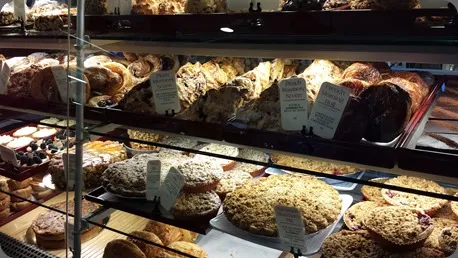And The Winners Are…
Factored into the ratings were key metrics (at least to us) including average beer and wine price, number of restaurants per capita, number of food trucks per capita, number of craft breweries and wineries per capita, access to healthy food options and number of food festivals per capita.
I would have put Seattle right at the top trailed closely by San Francisco – but alas, it wasn’t my research project. Both cities were in the top 10, but they lagged behind the leader. Incredibly enough (or perhaps not) the winner is Orlando!
Here’s The List of the Top 10 Cities:
2. Portland, OR
3. Miami, FL
4. Tampa, FL
5. San Francisco, CA
6. Cincinnati, OH
7. St. Louis, MO
8. Salt Lake City, UT
9. Richmond, VA
10. Seattle, WA
Interestingly, Seattle just edged out Rochester, NY. The Big Apple languishes at number 54. In case you wonder, New Orleans came in at 34 – below cities like Grand Rapids, MI, and Cleveland.
There are some great gems on this list, including Richmond, Cincinnati and St. Louis. These are cities that don’t automatically come to mind as culinary capitols – but they have vibrant food scenes.
There Is No Joy In Mudville – The Bottom 10
141. Garland, TX
142. Fayetteville, NC
143. Jackson, MS
144. San Bernardino, CA
145. Aurora, IL
146. Fontana, CA
147. Montgomery, AL
148. Grand Prairie, TX
149. Moreno Valley, CA
150. North Las Vegas, NV
I’m not sure how North Las Vegas will react, but the Texans in Garland and Grand Prairie won’t take kindly to this blemish on their civic pride. However, Laredo, Texas earns points for having the lowest average prices for beer and wine of the cities measured.
Fun Foodie Facts
- Laredo, Texas, has the lowest grocery cost index, 79, which is two times lower than in Honolulu, the city with the highest, 158.9.
- Orlando, Fla., has the most restaurants per 100,000 residents, 1,176.38, which is 9.8 times more than in Santa Clarita, Calif., the city with the fewest, 120.09.
- Santa Rosa, Calif., has the highest ratio of full-service restaurants to fast-food establishments, 1.74, which is 3.1 times higher than in Jackson, Miss., the city with the lowest, 0.57.
- Portland, Ore., has the most coffee and tea shops per 100,000 residents, 103.92, which is 29.5 times more than in Laredo, Texas, the city with the fewest, 3.52.
- Miami has the most gourmet specialty-food stores per 100,000 residents, 117.46, which is 14.5 times more than in Gilbert, Ariz., the city with the fewest, 8.08.
- Cincinnati has the most grocery stores per 100,000 residents, 128.29, which is 13.8 times more than in Santa Clarita, Calif., the city with the fewest, 9.32.
- San Francisco has the most cooking schools per 100,000 residents, 6.36, which is 28 times more than in Raleigh, N.C., the city with the fewest, 0.22.
To see the full results of the survey, visit this WalletHub link.



2 comments:
Cincinnati? Richmond?
Cincinnati does have some great restaurants. But I'm very surprised to see Richmond and Cincy top a city like New Orleans. The survey rolls in many different factors including affordability, number of grocery stores and bakeries, etc. Richmond has some cool dining spots, but I don't put them on par with New Orleans or NYC.
Post a Comment